Marian Henel—Tapestries and Madness
Marian Henel’s tapestries are huge. The largest one measures over 6 m in length and 3 m in width (19 ft. 8 in. by 9 ft. 10 in.). Created in the...
Zuzanna Stańska 10 November 2025
Leonardo da Vinci, prototype of the Renaissance man, is renowned for masterpieces such as the Mona Lisa, The Last Supper, and the Vitruvian Man… Who would have thought that Leonardo was also a caricature artist? Being the genius he was, enabled him to explore this form of art, which resulted in impressive representations of individuals or simply 15th-century jokes.
During the European Renaissance, and the subsequent centuries of artistic development, almost every artist had a side project doing caricatures. Frequently, these drawings were relegated to the margins of their sketchbooks, nevertheless they were still little pieces of art. Among these artists was Leonardo da Vinci, known and appreciated for his skill in the art of caricature or, as he called them, “visi mostruosi.”
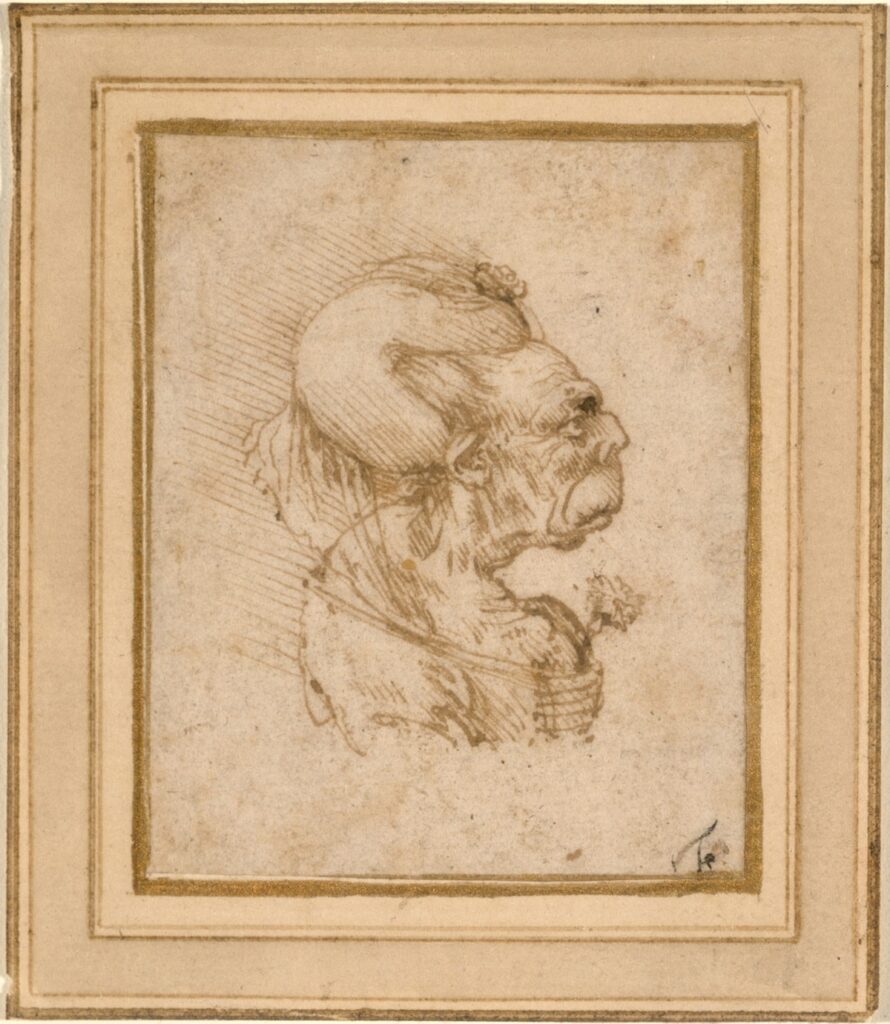
Leonardo da Vinci, Grotesque Head of an Old Woman, 1489-1490, National Gallery of Art, Washington, DC, USA.
Leonardo loved unusual faces and heads, he was fascinated by strange-looking people, whom he turned into tragicomic figures. According to Vasari himself, Leonardo was “so delighted when he saw curious heads, whether bearded or hairy, that he would follow for a whole day anyone who had thus attracted his attention, acquiring such a clear idea of him that when he returned home, he would draw the head as well as if the man had been present.”
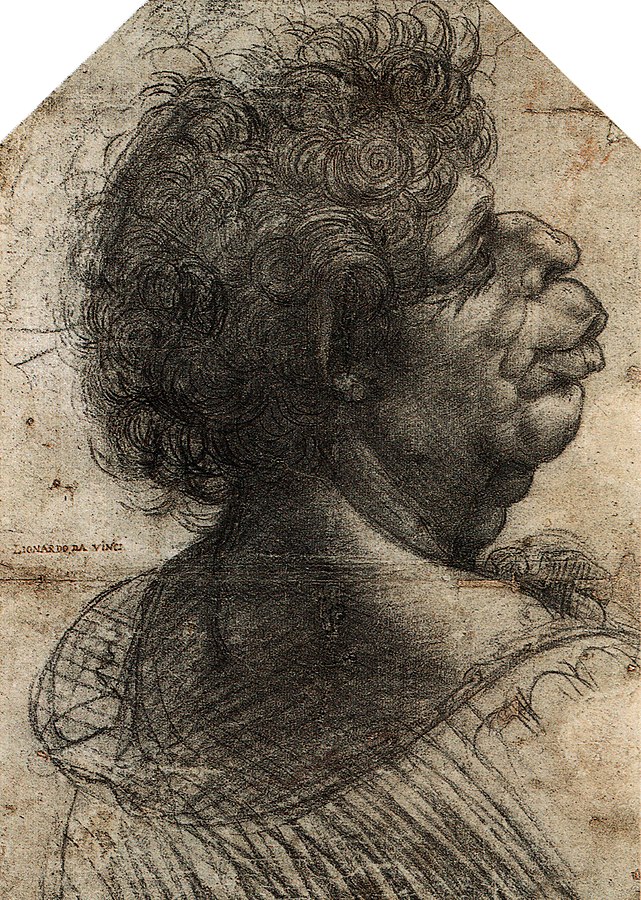
Leonardo da Vinci, Grotesque Head, 1482-1499, University of Oxford, Oxford, UK.
Leonardo’s interest in physiognomy led him to search for the full range of human facial expressions and features. Each of these imaginary heads is an autonomous drawing that helped him to prepare to round out the human expression of his paintings in his tireless search for the ideal of beauty.
The subject of each drawing is unique, born of Leonardo’s imagination, and exemplifies his eagerness to represent the astonishing and the unusual. However, they all bear the stamp of the genius’s technique. Leonardo uses closely spaced parallel lines to shade the figure. Even the strokes, drawn from upper left to lower right, are a telltale sign of Leonardo’s well-known left-handedness (right-handed artists shade from upper right to lower left).
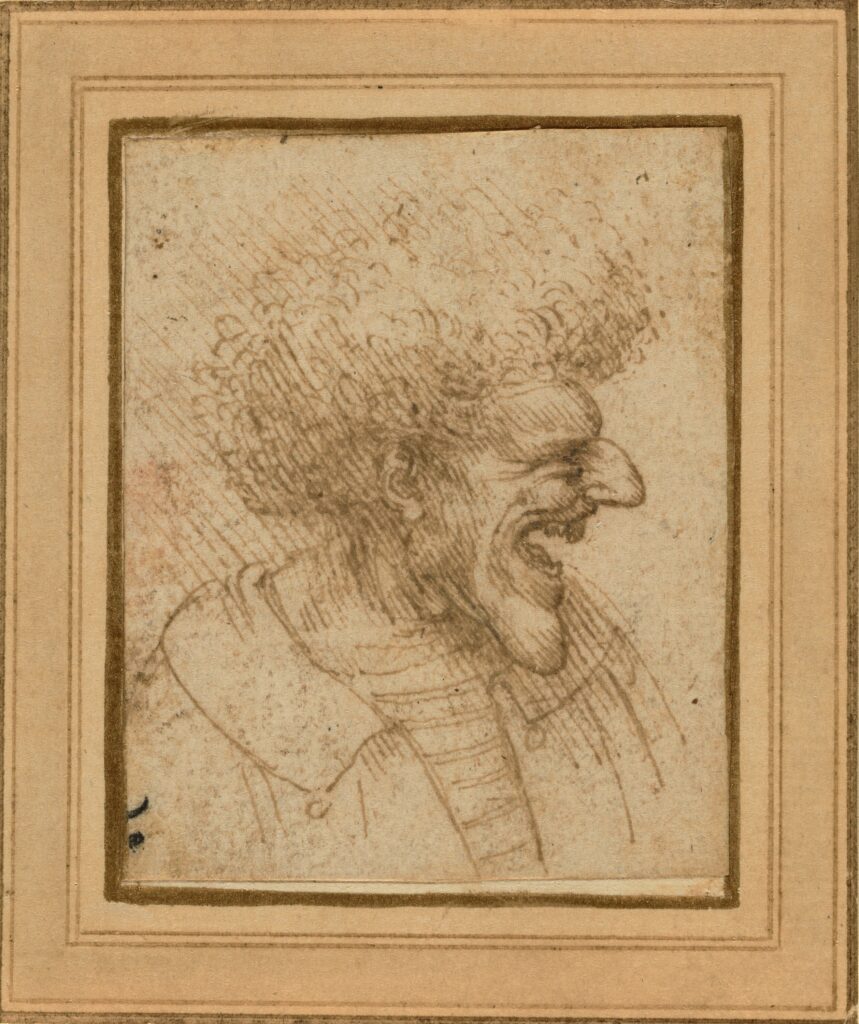
Leonardo da Vinci, Caricature of a Man with Bushy Hair, 1495, The J. Paul Getty Museum, Los Angeles, CA, USA.
In addition, the use of sfumato, a technique pioneered by Leonardo, can be appreciated. Da Vinci was a fervent believer that light and shadow merge without lines or edges, like smoke. Therefore, his drawings carry a characteristic softness of the contour and blurring of the edges, obtained through the technique of sfumato.
Over time, the drawings were given to Leonardo’s disciple, Francesco Melzi. Melzi made his own versions and made them available to other artists for study and copying. The evolution of this type of drawing in the centuries to come led to what we know today as caricatures.
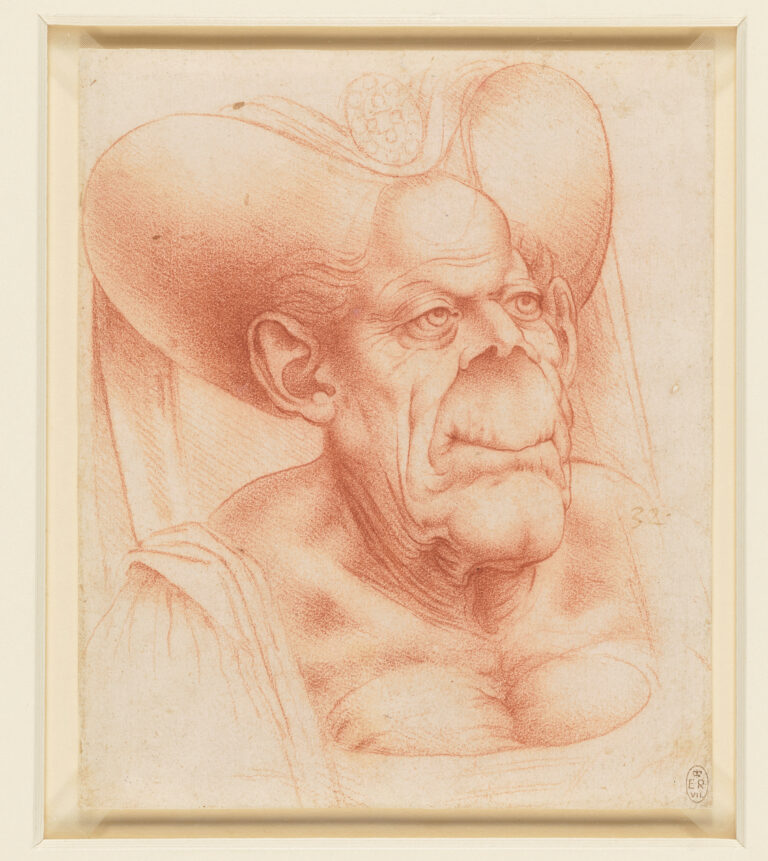
Francesco Melzi, The Bust of a Grotesque Old Woman, 1510-1520, Royal Collection Trust, London, UK
The works of Leonardo resonated even in the late 20th century in the work of Ralph Steadman, illustrator, and political cartoonist. Leonardo’s “caricatures” do not conform to what we know today as caricatures. However, they portray human beings with far less classical equanimity than the serene Mona Lisa or the impassive Christ. Thanks to the artist’s skill and irrepressible love of the human form, his drawings remain inspiring works even today.
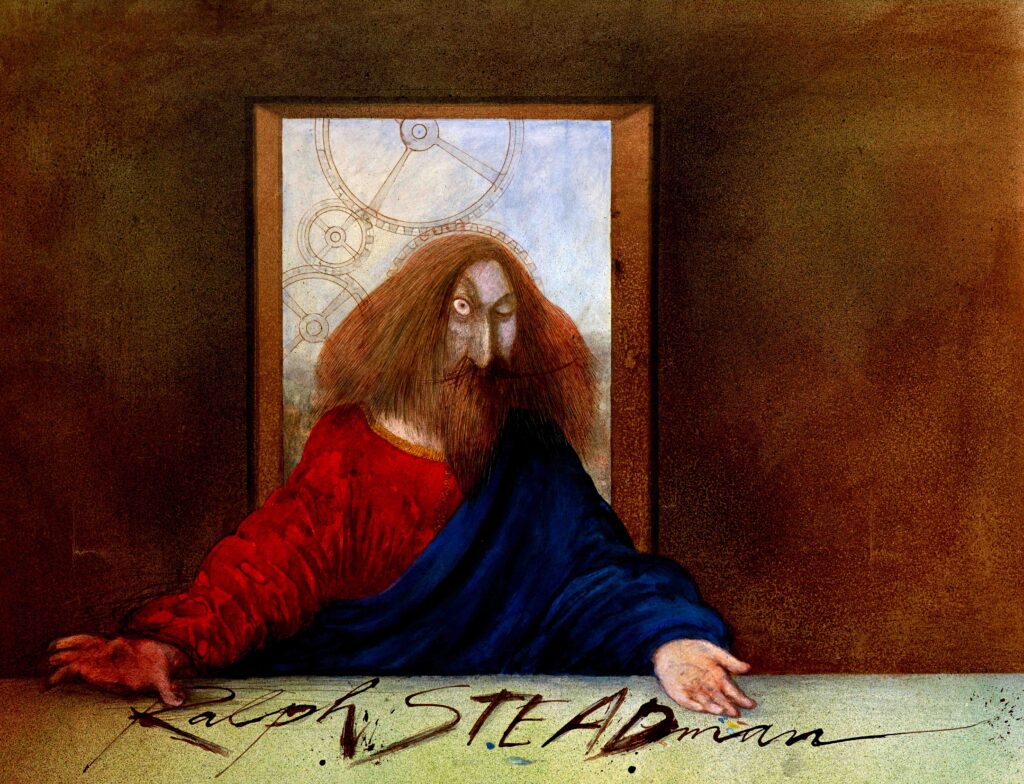
Ralph Steadman, I Leonardo, 1983
DailyArt Magazine needs your support. Every contribution, however big or small, is very valuable for our future. Thanks to it, we will be able to sustain and grow the Magazine. Thank you for your help!